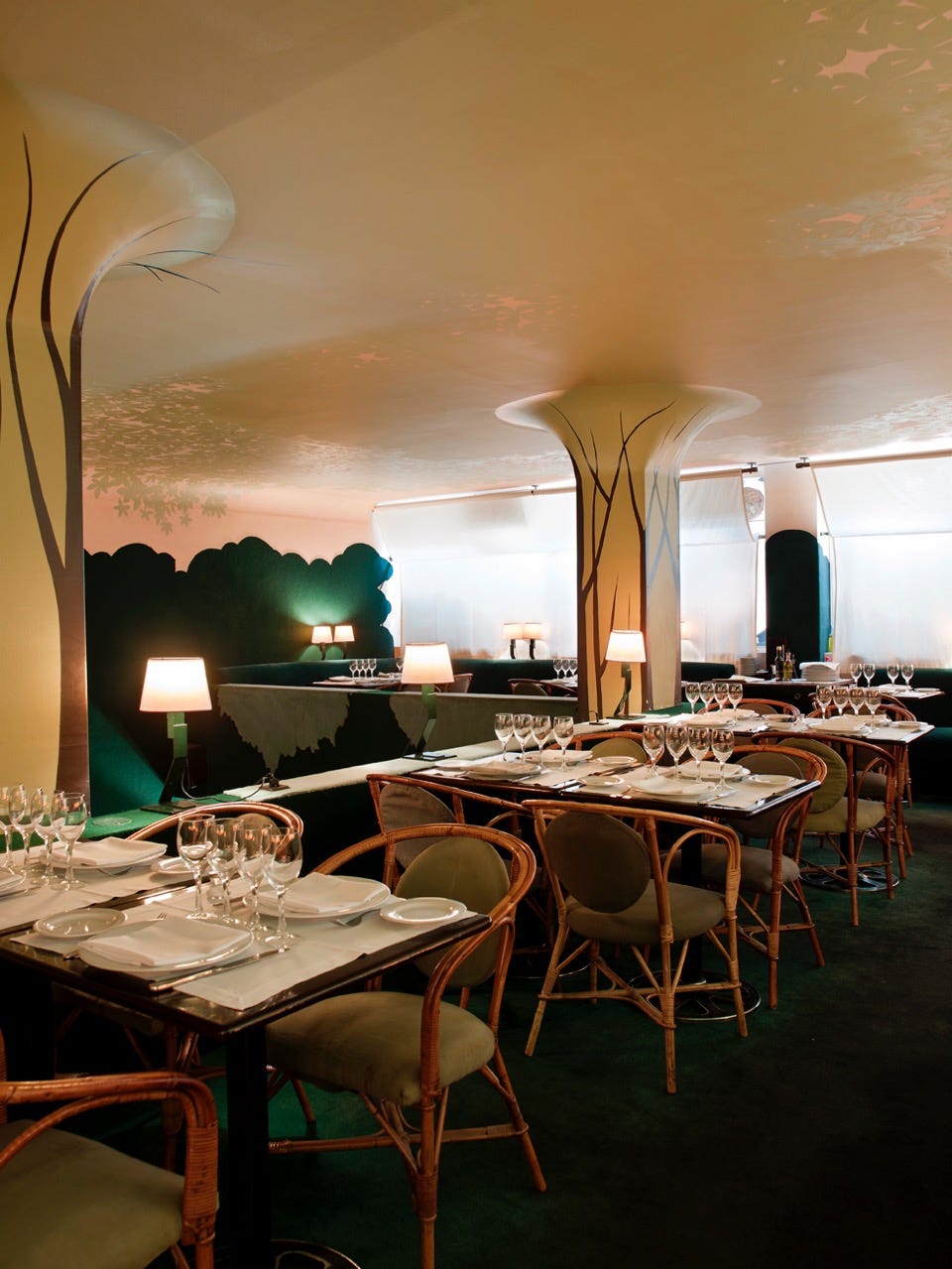Worth the Detour. Calle Granada del Penedès
An occasional series on out-of-the-way streets, sites and destinations in Barcelona. Not exactly undiscovered, but not overstuffed with tourists either.
#1 Calle Granada del Penedès
‘Above Diagonal’ is a large swathe of Barcelona that visitors rarely tread. Situated north of the Diagonal, an avenue that slices through the city from east to west, it’s mostly residential and office-y, with a few lovely historic buildings wedged between late 20th C apartment blocks.
The area was my first introduction to Barcelona. I landed a job in a dodgy English Language School on the Calle Tusset. I didn’t know at the time that this short street was the birthplace of Barcelona’s ‘ gauche divine (divine left) – the champagne socialist, countercultural revolution that shook up a dormant city in the 1970s-80s. In fact, the only inkling of hedonism I saw was a gay sauna which I once embarrassingly rolled up for with my swimming costume, having mistaken it for an indoor swimming pool.
Calle Granada del Penedès, a small cross street that is a stone’s throw from Calle Tusset, is where many of the artists, architects, designers and movers and shakers of the gauche divine went to eat. Often very, very late. Here, two glorious relics of the period remain.
Opened in 1970, Flash Flash is a hamburger and tortilla institution. It was started by photographer Leopoldo Pomés, and architect Alfonso Milà with encouragement from their wives after the couples experienced the emblematic diners of New York City on a trip together. At the time, and surprisingly given Spaniards' love of late-hour dining, there wasn’t an informal place to pop into and refuel before or after a night on the tiles.
Both Pomés and Milà put their creative vision into the décor. Life-sized painted murals of a Twiggy-type young woman were copied from photos taken by Pomés of his model wife Karin Leiz. (She holds a vintage flash camera, a direct reference to the restaurant’s name.) The glossy red surfaces contrasted with modular-curvy white leather banquettes are pure Milà – one of the few real advocates of mid-century modernism in Barcelona. While the décor of Flash Flash has remained wholly authentic, its menu has been updated to include an excellent range of Catalan comfort food dishes. It's still frequented by locals and Catalan families, and for a genuine (and delicious) slice of local pop culture is a hard act to follow.
Except across the street at Il Giardinetto, an Italian restaurant designed by Alfonso Milà and his professional partner Federico Correa. It won the FAD prize for interior design in 1974 and apart from a sensitive nip and tuck in 2012 still retains its singular, period wow.
The split-level space is soaked in all shades of green, from wall-to-wall carpets and surface coverings, and trompe l'oeil murals in the form of trees and foliage - together giving the appearance of a highly stylised garden. Downstairs at the cocktail bar you can pop in for a drink, or head upstairs for a plate of pasta in the company of middle-aged members of the city’s creative establishment who have never stopped coming. From the glass-enclosed display boxes at the side of the front door (which occasionally exhibit new works from local designers) to the forest green velvet seating, curved woodwork and smoky palm-frond-shaped mirrors, Il Giardinetto is pure class. Years ago, I showed it Tyler Brulé, who back then was still the editor of Wallpaper Magazine. He declared that nobody does interior lighting better than the Catalans, and I still think he’s right.
Is there better Italian food to be enjoyed in Barcelona? Of course! But none quite in a setting as evocative and fanciful as Il Giardinetto.
Shameless plug: Both Flash Flash and Il Giardinetto can be visited with me as part of ‘Consuming Architecture’ – an experience offered by Barcelona Design Tours. I will take you further into the design history of Barcelona over tapas, cocktails and great conversation.









